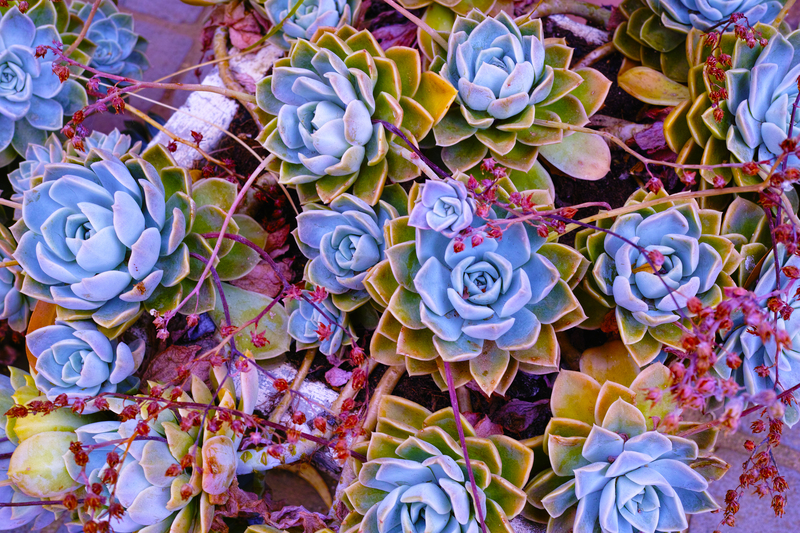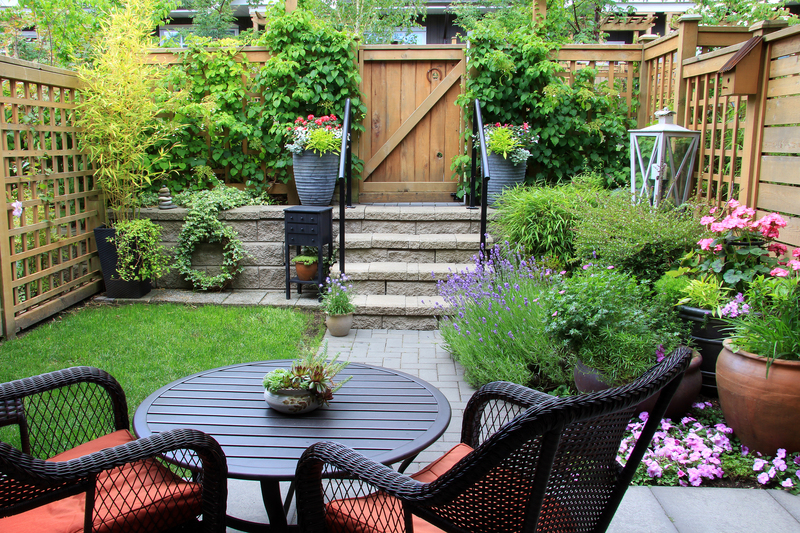A Journey into the Realm of Container Gardening
Posted on 13/09/2025
A Journey into the Realm of Container Gardening
Container gardening is more than just arranging potted plants on a patio; it's a creative and practical approach that opens up a world of gardening possibilities, no matter where you live. Whether you're a seasoned horticulturist or a complete beginner, venturing into the realm of container gardening can provide immense joy and rewarding harvests. This comprehensive guide will take you on a journey into the fascinating world of potted plant cultivation, offering essential tips, innovative ideas, and expert advice to help you create your own flourishing oasis.
Understanding the Basics of Container Gardening
At its core, container gardening involves growing plants in various types of vessels--pots, tubs, hanging baskets, troughs, and even repurposed objects. This method is perfect for individuals with limited space, such as apartment dwellers, or those wishing to add greenery to patios, balconies, or rooftop gardens.
Why Choose Container Gardening?
- Flexibility: Containers can be moved easily to follow sunlight or shade, protect plants from inclement weather, or simply for design changes.
- Accessibility: Tending plants in elevated pots is easier on the back and knees, making gardening accessible for all ages.
- Versatility: A wide variety of plants, from vegetables and herbs to decorative flowers and shrubs, can thrive in containers.
- Control: Gardeners can better manage soil quality, water, and pests compared to traditional in-ground plots.

Choosing the Right Containers for Your Garden
The first step in your journey into container gardening is selecting suitable containers. Not all pots are created equal. The material, size, and drainage capabilities make a real difference in plant health.
- Terracotta Pots: Porous and breathable, they're ideal for many herbs and flowers but can dry out quickly.
- Plastic Containers: Lightweight and moisture-retentive, they're perfect for balconies or roof decks but can overheat in direct sun.
- Ceramic and Glazed Pots: Ornamental and heavy, helping to anchor taller plants, but must have adequate drainage holes.
- Metal & Wooden Containers: Unique and stylish, yet wood must be treated to prevent rot, and metal can heat up, harming roots in summer.
- Repurposed Objects: Old buckets, boots, tins--get creative! Just be sure there's proper drainage.
Tip: No matter which container you choose, drainage holes are essential to prevent root rot and water accumulation.
Selecting the Perfect Soil Mix for Container Success
One of the secrets to thriving potted gardens lies in the soil. Ordinary garden soil is usually too dense for containers. Instead, use a premium potting mix formulated to retain moisture while providing excellent aeration.
- Commercial Potting Mix: These blends typically include peat, compost, bark, perlite, or vermiculite for optimal drainage and nutrient flow.
- Homemade Mix: Combine equal parts compost, coconut coir or peat, and perlite for a balanced, custom blend.
- Special Amendments: Add slow-release fertilizer, worm castings, or mycorrhizal fungi to boost plant health.
Pro Tip: Refresh your containers with new soil and compost each season to replenish nutrients and prevent disease.
What Can You Grow? Exploring Plant Options for Container Gardening
The beauty of a container garden is the wide variety of plants you can grow. There's something for everyone, from culinary gardeners and flower lovers to those seeking an edible landscape.
Vegetables and Herbs for Urban Containers
- Lettuce & Salad Greens: Quick and easy to grow, perfect for cut-and-come-again harvesting.
- Tomatoes: Dwarf or cherry varieties thrive in pots with ample sunlight and support.
- Peppers & Eggplants: Compact varieties do well in medium to large containers.
- Herbs: Basil, chives, thyme, mint, and parsley bring flavor and fragrance to your container oasis.
- Root Vegetables: Carrots, beets, and radishes can flourish in deep pots with light, loose soil.
Ornamental Plants, Flowers, and Shrubs
- Annual Blooms: Petunias, calibrachoa, and impatiens provide vibrant, season-long color.
- Perennials: Hostas, lavender, and salvias can grace your pots year after year.
- Grasses & Shrubs: Boxwood, junipers, or grasses add structure and winter interest.
- Bulbs: Daffodils, tulips, and crocuses offer early spring bloom indoors or outdoors.
Key Tip: Choose plant varieties labeled "compact," "dwarf," or "bush" for the best results in containers.
Designing Your Dream Container Garden
Container garden design is both science and art. By coordinating color, texture, and plant size, you can create visually stunning arrangements that change with the seasons.
Essential Design Elements
-
Thriller, Filler, Spiller:
- Thrillers are tall, bold plants like ornamental grasses or upright flowers.
- Fillers are bushier plants that provide mass, such as begonias or coleus.
- Spillers "flow" over the container's edge, e.g., trailing ivy, sweet potato vine, or nasturtium.
-
Color Coordination:
- Choose plants with complementary flower or foliage hues for a harmonious display.
- Try monochromatic schemes for calmness, or bold contrasts for excitement.
-
Layering Heights:
- Arrange taller plants in the center or back, medium plants in the middle, and low-growing or trailing plants along the edges.
Creative Container Garden Ideas
- Vertical Gardens: Use wall-mounted pockets or stacked pots for herbs and succulents on balconies.
- Edible Walkways: Line patios with pots of strawberries, peppers, or dwarf fruit trees.
- Pollinator Pots: Fill containers with lavender, salvia, and alyssum to attract bees and butterflies.
- Seasonal Displays: Switch out plantings as the seasons change, using bulbs in spring, annuals in summer, and evergreens in winter.
Caring for Your Container Garden: Practical Tips
Nurturing a container garden requires consistent attention. Success comes down to a few key factors:
Watering
- Check daily: Containers dry out faster than ground soil, especially in hot weather.
- Watering method: Water deeply until water drains out holes, but avoid letting pots sit in excess water.
- Self-watering containers: Consider pots with built-in reservoirs for busy gardeners.
Fertilizing
- Feed regularly: Nutrients are depleted more quickly in pots. Use a liquid feed every few weeks or slow-release fertilizer pellets at planting time.
Pruning & Maintenance
- Deadheading: Remove spent flowers to encourage continued blooming.
- Prune leggy plants: Trim stems to promote fuller growth.
- Inspect for pests: Aphids, spider mites, and slugs can appear. Address promptly with organic sprays or removal.
Troubleshooting Common Container Gardening Challenges
Even the most diligent gardeners face problems. Here's how to overcome a few frequent container gardening woes:
- Yellow Leaves: Often caused by overwatering or lack of nutrients. Adjust watering and feed your plants.
- Wilting: Both underwatering and overwatering can cause wilting. Check soil moisture before reacting.
- Stunted Growth: Too small a container, depleted nutrients, or poor light can inhibit plant growth. Transplant or fertilize as needed.
- Pests & Diseases: Quarantine new plants, clean containers between seasons, and inspect regularly for signs of trouble.
Extending the Joy: Year-Round Container Gardening
Container gardening isn't just for summer. Here's how you can enjoy lush containers every month of the year:
- Spring: Fill pots with tulips, hyacinths, and pansies.
- Summer: Experiment with drought-tolerant succulents and heat-loving annuals.
- Autumn: Mums, ornamental cabbage, and asters provide fall color.
- Winter: Miniature evergreens, holly, and decorative twigs bring structure and life to otherwise bare spaces.

Environmental Benefits & Community Impacts of Container Gardening
Container gardening isn't just a personal pleasure--it also offers significant ecological and social benefits.
- Reducing Urban Heat: Plants in containers help cool down concrete jungles.
- Supporting Pollinators: Flowering pots offer vital nectar sources for bees and butterflies.
- Community Building: Shared rooftop or community container gardens foster social interaction and urban greening.
- Educational Opportunities: Involving children in container gardening teaches valuable lessons about food, nature, and responsibility.
Conclusion: Embark on Your Container Gardening Adventure Today
As you've learned, the world of container gardening is vast and filled with possibilities. From urban rooftops to suburban patios and cozy balconies, container gardening transforms any space into a vibrant, green retreat. By selecting appropriate containers, using high-quality soil, choosing the right plants, and practicing smart garden care, you can savor fresh harvests or blooms year-round.
Ready to embark on your journey into container gardening? Get creative, experiment boldly, and most of all--enjoy the process of watching life flourish in the realm of your own potted paradise.



